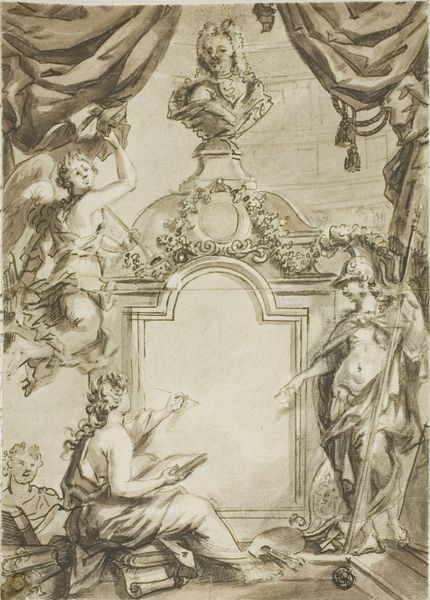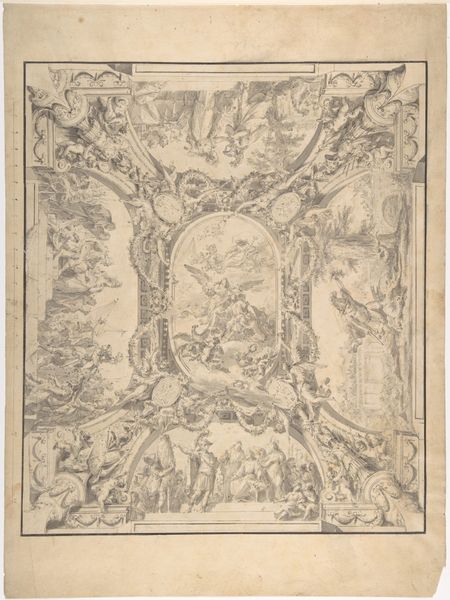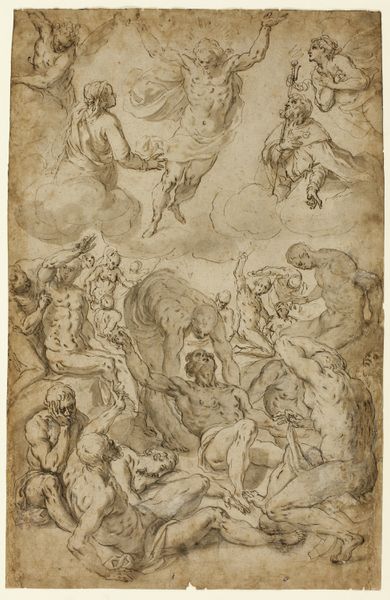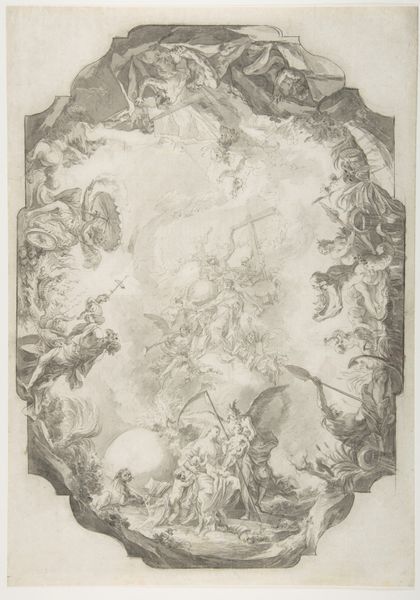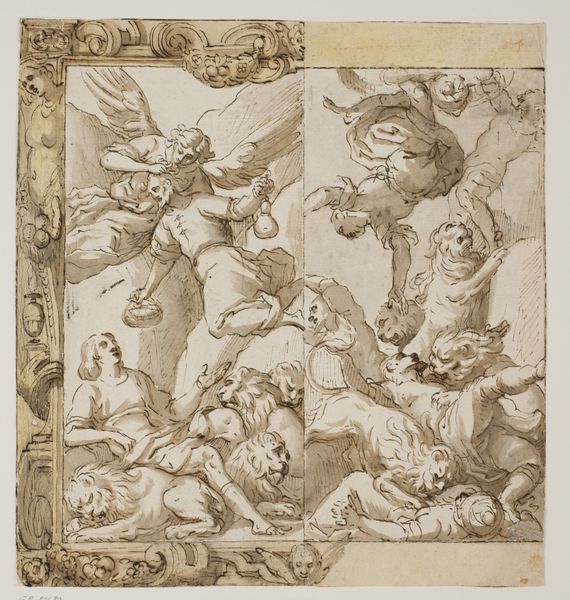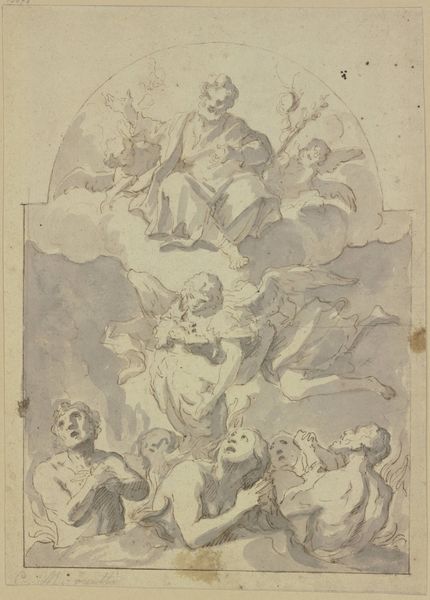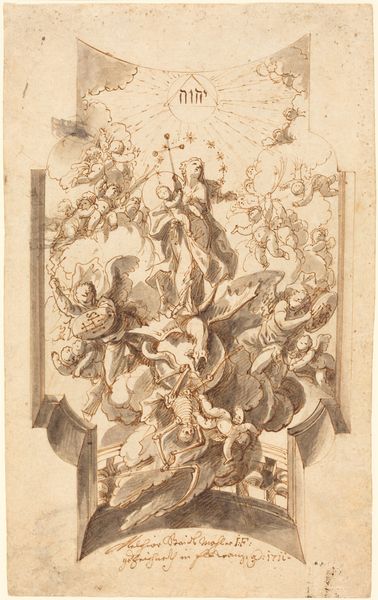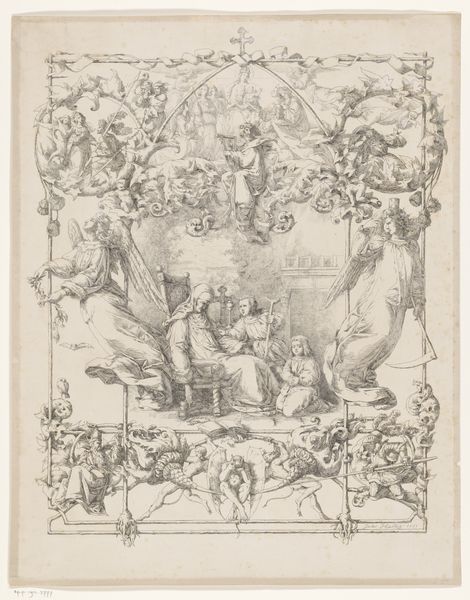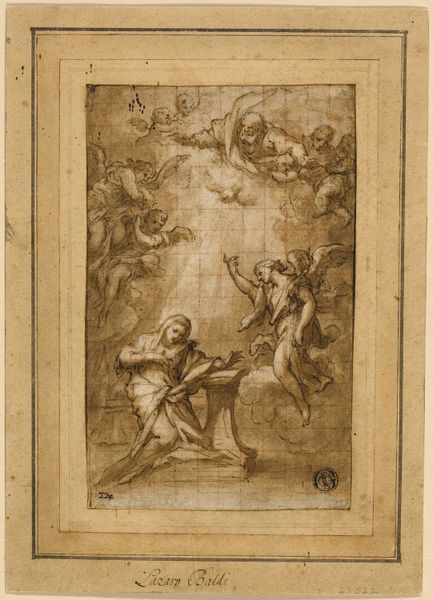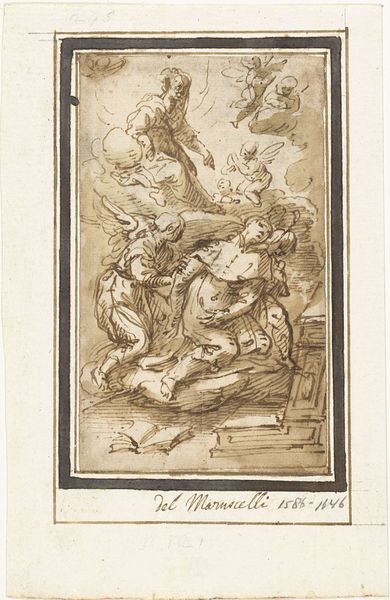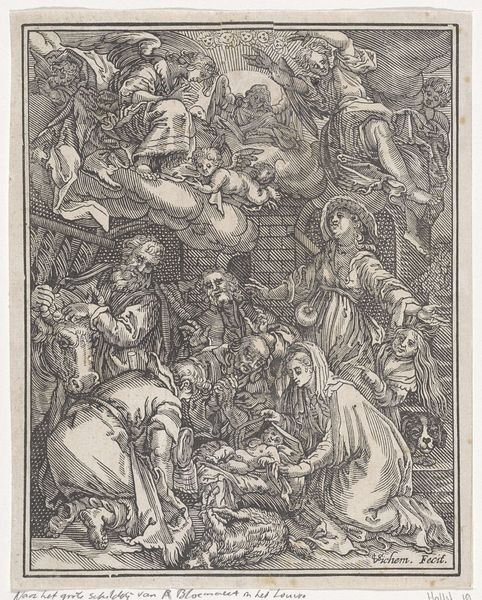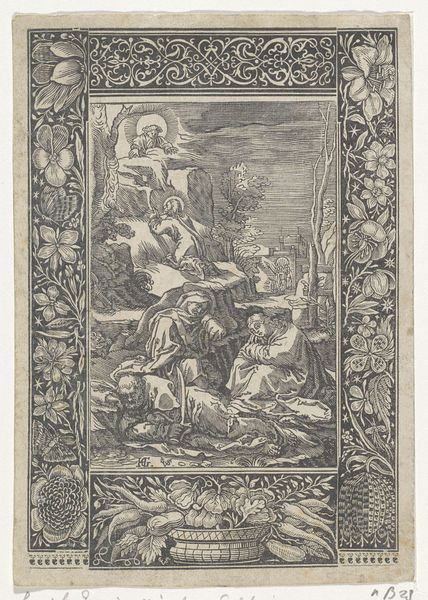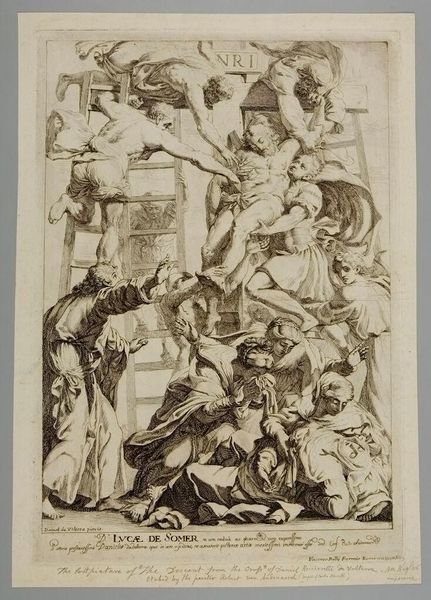
Ontwerp voor een plafond met vijf allegorische figuren 1659 - 1711
0:00
0:00
augustinusiterwesten
Rijksmuseum
drawing, tempera, paper, ink
#
drawing
#
toned paper
#
allegory
#
baroque
#
tempera
#
figuration
#
paper
#
ink
#
history-painting
#
watercolor
Dimensions: height 400 mm, width 312 mm
Copyright: Rijks Museum: Open Domain
Curator: What an evocative design! I sense swirling movement and almost palpable drama even in this toned ink drawing. Editor: This is "Ontwerp voor een plafond met vijf allegorische figuren," a design for a ceiling by Augustinus Terwesten, likely created sometime between 1659 and 1711. It's currently held in the Rijksmuseum. The artist used ink, tempera, and watercolor on paper to depict these allegorical figures. Curator: Allegorical… the piece definitely pulls you into that visual rhetoric of its time. Each figure feels symbolic, laden with potential meaning about power, virtue, perhaps even earthly concerns versus the divine. Editor: Right, allegory was a powerful visual tool in this period. Ceiling paintings were not merely decorative, but often served as propaganda, reinforcing the patron’s values and social standing. Curator: I immediately focus on the female figures – particularly the central one with her arms raised. There is a defiant sense to her pose. What sort of statement do you think it projects? Editor: It is interesting to read her that way. Consider the art world at this time: who commissioned this piece? How might their views impact her visual representation? A deep dive into the history of ceiling paintings is crucial. Curator: Precisely! Knowing more about Terwesten's specific artistic influences might give some clues, along with other imagery that he would use in other works for other social elites in that area, in order to understand better his own artistic views, regardless of gender. It is this kind of dialogue which reveals that these historical art pieces transcend and reflect issues concerning modern societies. Editor: Well, I agree up to a point, I think that such pieces reflected primarily the world of that time, the baroque aristocratic world in Northern Europe which saw this type of art form as symbols of power. Curator: A compelling artwork like this design prompts us to think beyond mere aesthetics, urging a profound meditation on history, identity, and meaning in representation across the eras. Editor: And on art itself! By examining this preliminary study in relation to Terwesten’s life and times, and by considering its function as ceiling decoration, we gain access into a network of artistic, social, and political relationships in Baroque era.
Comments
No comments
Be the first to comment and join the conversation on the ultimate creative platform.
